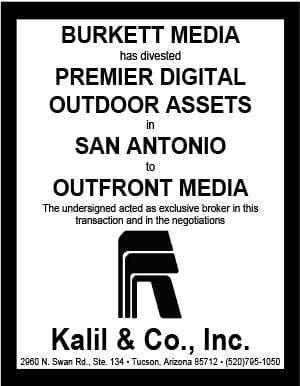 Digital out-of-home (DOOH) may have claimed the limelight in recent years, but demand for static OOH remains strong. It accounts for nearly 70% of available OOH market inventory today. While both OOH formats present unique challenges for media owners, Broadsign today released its first State of Static OOH report, which provides key insights into the challenges and opportunities facing the static OOH industry today and into the future.
Digital out-of-home (DOOH) may have claimed the limelight in recent years, but demand for static OOH remains strong. It accounts for nearly 70% of available OOH market inventory today. While both OOH formats present unique challenges for media owners, Broadsign today released its first State of Static OOH report, which provides key insights into the challenges and opportunities facing the static OOH industry today and into the future.
Broadsign’s report collected input from more than 125 OOH professionals spanning 60 companies spread across the globe. More than 2/3 of participants originated from companies with hybrid static/digital networks ranging from a few hundred screens to thousands. Key report findings include:
Workflow efficiency is a top priority.
Despite the success of static OOH in the digital era, most participants expressed that OOH workflows remain more complex than necessary, hindering productivity. Only 17% surveyed said their teams operated as well-oiled machines, and nearly half expressed ample room for workflow refinement. Furthermore, 53% cited operational inefficiencies as a competitive disadvantage. Participant responses suggest that the modernization of static tools and workflows will be crucial to increasing OOH’s share of ad revenue in the coming years.
Emerging technologies are changing the game.
From automation tools to data and analytics solutions, emerging technologies are bringing new opportunities to the static OOH market, and report participants expressed that they’ve begun to place more of a premium on technology that provides real-time insights into their inventory availability, as well as data and analytics. 87% of respondents believed incorporating more automation into their processes would benefit their businesses. When asked which technologies or trends would significantly impact future industry growth, 59% of respondents said data-driven targeting and another 47% cited data measurement and attribution.
The future of static OOH is greener.
Sustainability emerged as a priority among report participants, with many expressing plans to implement more sustainable business practices to work towards a more carbon-neutral future. Nearly 64% of the group had already made pledges to reduce their carbon footprint and 17% noted an intention to implement sustainability measures. As for actions already underway, 56% of participants reported using energy-efficient LEDs for signage, while 33% reported using recycled materials, and 48% noted reusing or donating vinyl post-campaign.
“Static is going to continue playing an essential role in the OOH market for the foreseeable future, but as more screens go digital, adapting with the times will be vital. To this end, there is more work to be done to automate the tools and processes used across the industry and reduce static OOH’s carbon footprint,” shared Broadsign Product Marketing Specialist Catherine Lee. “Our report findings not only reinforce these challenges, but point toward an optimistic future for the industry should it work together to evolve and overcome them. We’re excited to reveal our findings to the community and hope they’ll inspire conversions that drive change.”
For more information, please download and read the full Broadsign report.
To receive a free morning newsletter with each day’s Billboard insider articles email info@billboardinsider.com with the word “Subscribe” in the title. Our newsletter is free and we don’t sell our subscriber list
Paid Advertisement

















